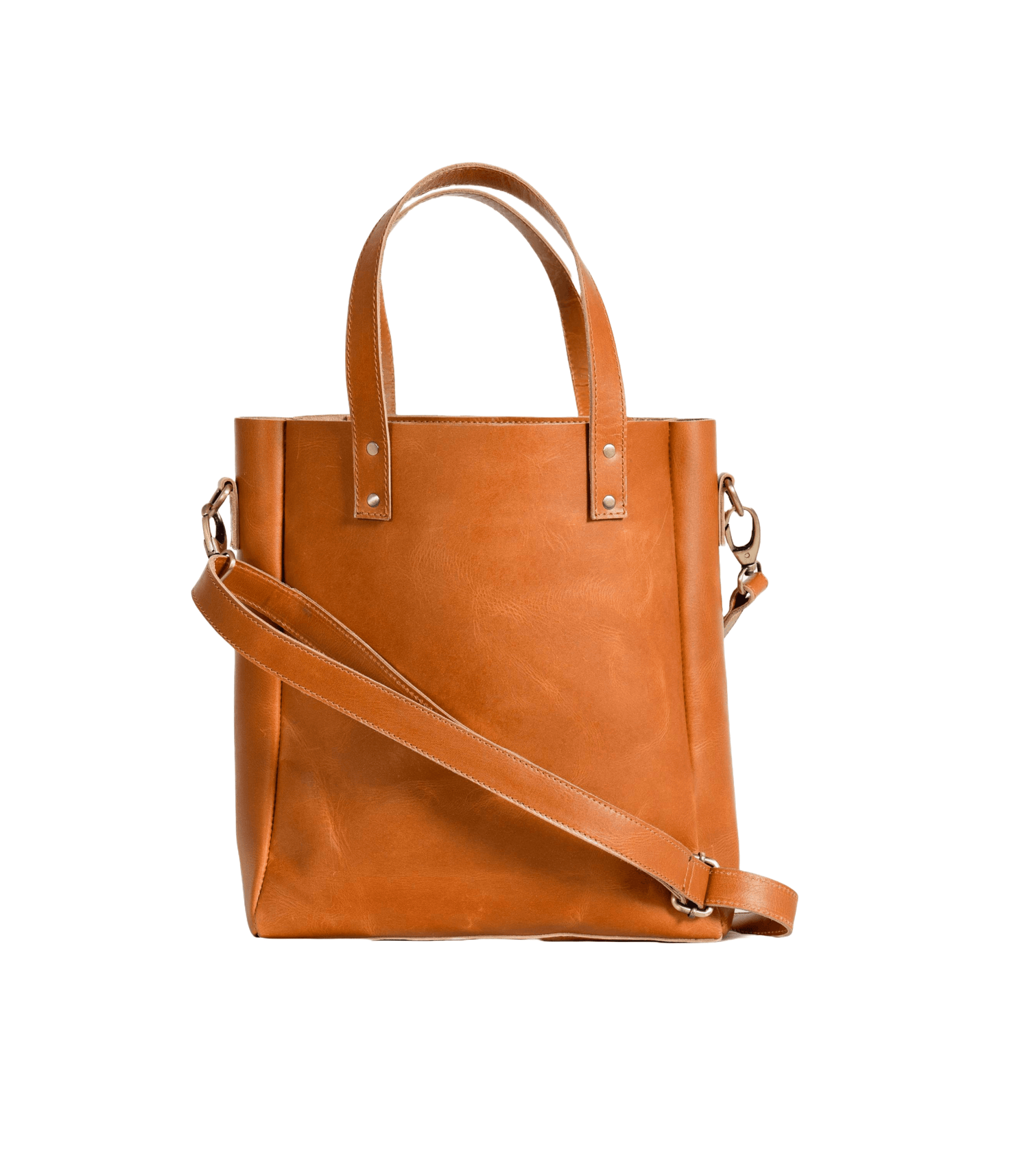
What are the Different Types of Leather: Usage and Buying Guide
Share
Leather is a highly durable and versatile material that has been used for centuries in the creation of various products, from leather purses and handbags to home furnishings. Understanding the different types of leather is key to making the right choice for your needs, whether you're shopping for a jacket, a leather handbag, or a pair of shoes. Here’s a breakdown of the most common types of leather, their usage, and a buying guide to help you make an informed decision.
1. Full-Grain Leather
Usage:
Full-grain leather is the highest quality leather you can buy. It’s made from the outermost layer of the hide and retains all of the natural grain. This type of leather is strong, durable, and ages beautifully over time, developing a unique patina.
Applications:
- High-end furniture
- Luxury leather goods
- Quality leather bags
- Luxury shoes
- Belts and wallets
- Small leather purses
Buying Guide:
When purchasing full-grain leather, look for thickness and natural imperfections, which indicate authenticity. It’s pricier, but the durability and aesthetic improvements with age make it worth the investment.
2. Top-Grain Leather
Usage:
Top-grain leather is the second highest grade of leather. It’s also made from the top layer of the hide, but the surface is sanded and treated to remove imperfections, giving it a smooth and uniform appearance.
Applications:
- Leather jackets
- Leather bag
- Leather sling bag
- Upholstery
- Large leather purse
- Office bag
Buying Guide:
Top-grain leather is slightly cheaper than full-grain but still offers great durability. If you prefer a sleeker, more polished look without natural imperfections, top-grain leather is a great option.
3. Genuine Leather
Usage:
Genuine leather is a lower grade leather made from the layers of the hide that remain after the top layers have been removed. It’s less durable and may wear out faster than higher-grade leathers but is more affordable.
Applications:
- Leather accessories
- Casual shoes
- Wallets
- Leather tote
- Mens leather goods
Buying Guide:
If you're looking for budget-friendly leather goods, genuine leather can be an option, but it may not last as long as full or top-grain leather. Always check the product's construction to ensure it's worth the price.
4. Bonded Leather
Usage:
Bonded leather is made from scraps of leather that are bonded together with polyurethane or latex onto a fiber sheet. It’s the lowest grade of leather and has a more synthetic feel and appearance.
Applications:
- Budget furniture
- Cheap belts or wallets
- Bookbinding
Buying Guide:
Bonded leather is the least expensive option but also the least durable. If you’re looking for longevity, you may want to avoid bonded leather, especially for high-use items like furniture or footwear.
5. Suede Leather
Usage:
Suede is a type of leather made from the underside of the animal hide, resulting in a soft, velvety texture. It’s less durable than other types of leather, but its unique feel makes it popular for specific fashion items.
Applications:
- Shoes
- Jackets
- Soft leather bag
Buying Guide:
Suede is prone to staining and can be difficult to clean. If you choose suede, consider purchasing a protective spray and be prepared for extra care.
6. Nubuck Leather
Usage:
Nubuck is similar to suede but is made from the outer layer of the hide. It’s sanded to give it a soft texture, but because it’s made from the stronger top layer of the hide, it’s more durable than suede.
Applications:
- Footwear
- Luxury handbags
- Jackets
- Soft leather handbags
Buying Guide:
Nubuck, like suede, requires careful maintenance. If you’re considering nubuck leather, ensure you use products designed specifically to protect and clean nubuck.
Leather Buying Guide: Tips for the USA Market
-
Check Leather Source:
Look for brands that source leather responsibly. Some of the best leathers come from the USA, Italy, and Argentina. -
Verify Craftsmanship:
Pay attention to stitching, edges, and overall construction, especially for items like shoes, bags, and furniture. Good craftsmanship often means the leather item will last longer. -
Understand Coatings:
Some leathers are coated with synthetic finishes that reduce the natural feel but may offer added protection. Decide whether durability or aesthetic appeal is more important to you. -
Climate Considerations:
Leather reacts to humidity and temperature changes. In the USA, depending on your region, consider conditioning your leather goods more often to prevent drying and cracking.
Frequently Asked Questions (FAQ)
Q1: How do I tell if leather is real or fake?
Look for natural imperfections, smell, and texture. Real leather has a distinct smell and grain pattern, while fake leather feels more synthetic and uniform.
Q2: How do I care for leather?
Use a leather conditioner regularly and keep your leather goods away from direct sunlight and water. Store them in cool, dry places.
Q3: Which type of leather is best for furniture?
Full-grain or top-grain leather is ideal for furniture due to its durability and ability to age gracefully.
Q4: Is bonded leather worth buying?
Bonded leather is not as durable as other types of leather, so it may not be a good investment for long-term use, especially for high-use items like sofas or belts.
Q5: Can leather be repaired?
Yes, small scratches and tears in leather can be repaired by professionals or with DIY kits, though results will vary based on the type of leather and damage.
Conclusion
Leather comes in various types, each with its own unique characteristics. Whether you need something durable like full-grain leather or something more affordable like genuine leather, knowing the differences will help you choose the right product for your needs. Be sure to take proper care of your leather goods to extend their lifespan and keep them looking their best.
#LeatherGuide #FullGrainLeather #TopGrainLeather #LeatherBuyingTips #GenuineLeather #LeatherCare #LeatherFurniture #FashionLeather #USAMarket #LeatherGoods #SustainableLeather



